The #1 comprehensive guide to yarn substitution
Yarn substitution can be tricky. You’ve tried to find the perfect alternative to the yarn called for in the pattern but it just isn’t working . What should you do? Have no fear. With this comprehensive guide, you’ll be a yarn substitution boss in no time!
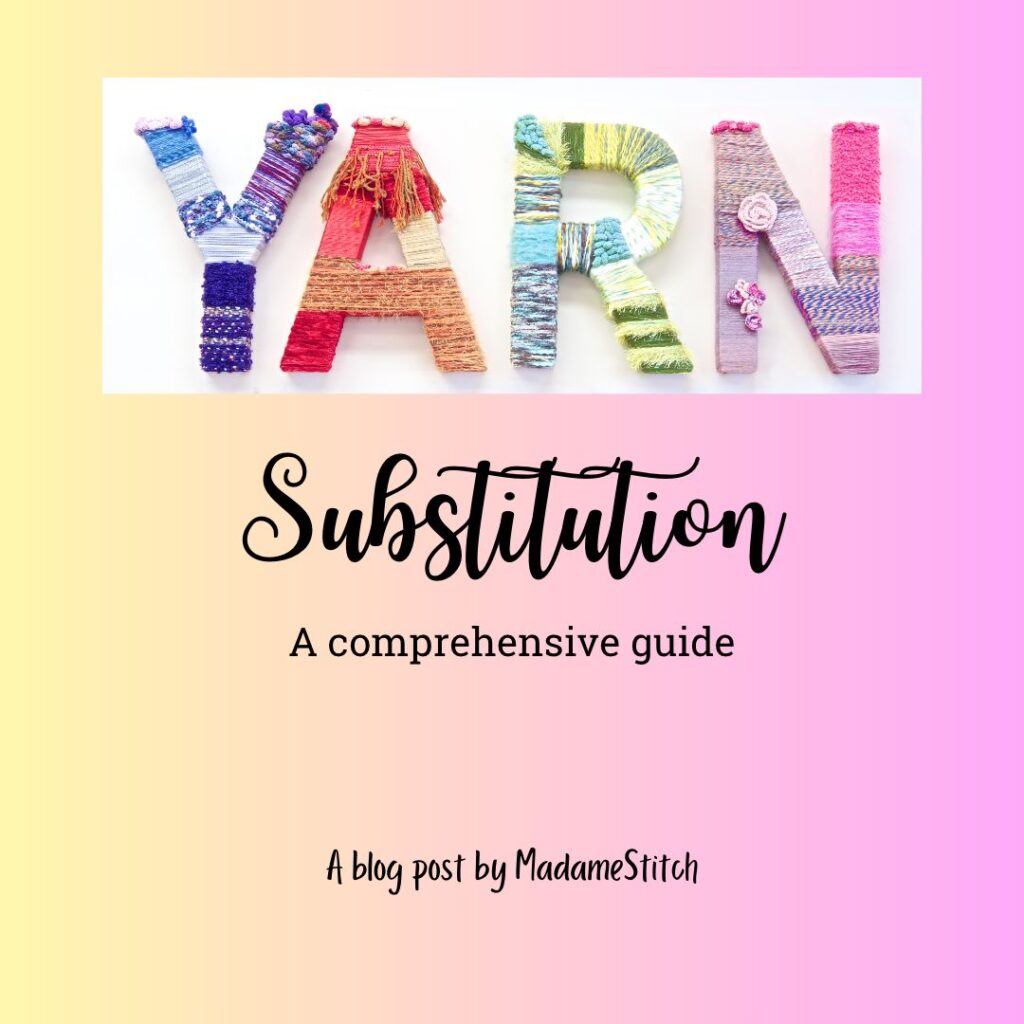
Picture this: You’ve found the perfect pattern and you can’t wait to get started. Time to get the yarn. Wait, this pattern calls for a yarn that’s discontinued or it’s unavailable where you live. Or, you have the perfect yarn in your stash and you want to use it instead.
Whatever the reason, you need to substitute yarn. All you have to do is get the same weight and buy enough yardage, right? Not so fast!
I remember several instances where my yarn substitutions were an epic fail because I didn’t know what I was doing. I wish I’d had the information I needed to make an informed decision and save myself from an epic fail.
How do you know what will work and what won’t? Sometimes yarn substitution isn’t a quick and easy solution.
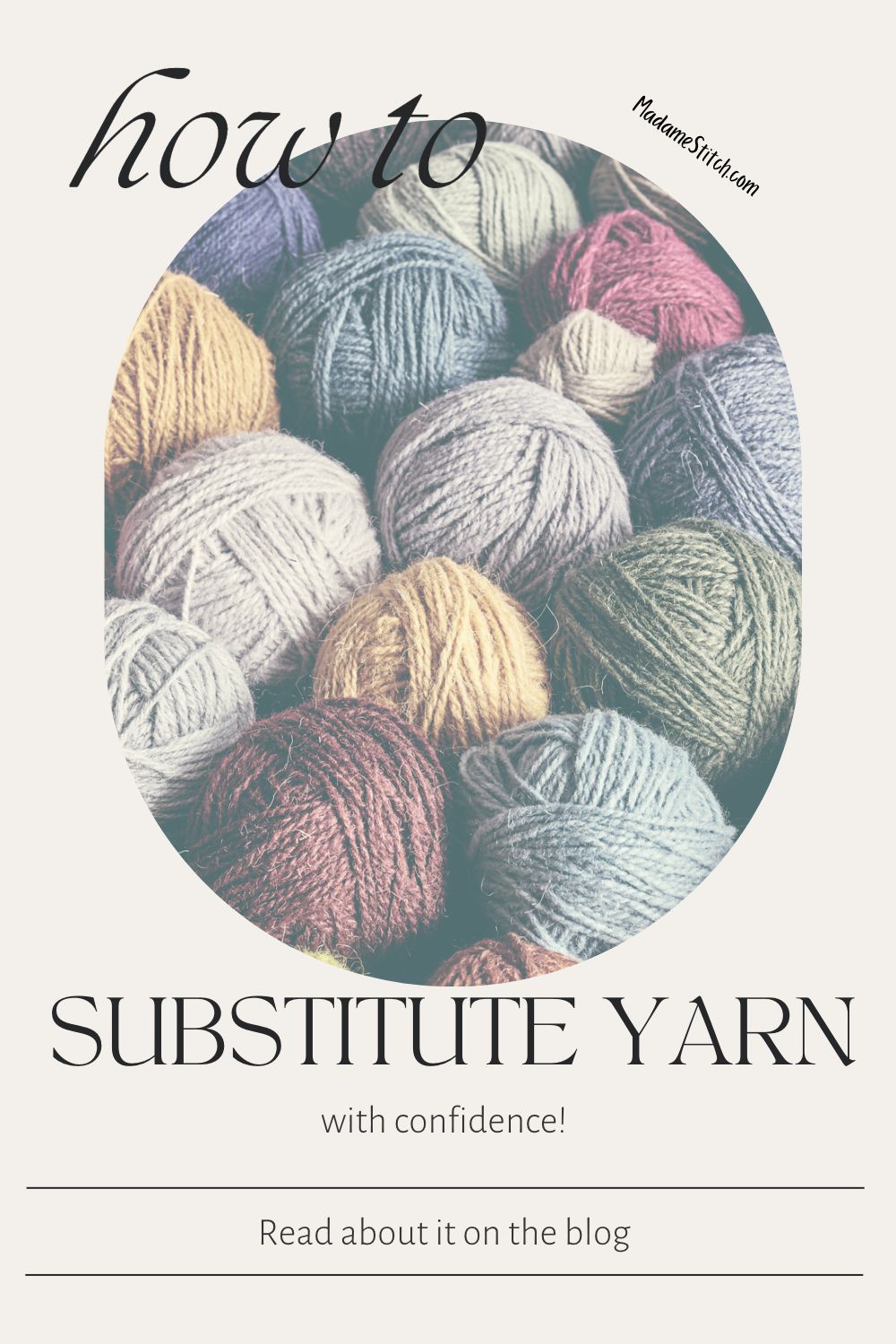
By the time you finish this post, though, you’ll have a working knowledge of yarn substitution that will make you successful almost every time.
Why might yarn substitution be necessary?
There are lots of reasons why you may want or need to decide on yarn substitution for your new project.
- The yarn called for in the pattern is too expensive or no longer available.
- You don’t like the yarn and want to use something else.
- You have a bajillion skeins in your stash; surely something there could be used.
- Maybe you’re sensitive to the fibers in the featured yarn.
Whatever the reason, I’ve got your back!
Here are 5 things to consider for yarn substitution.
Understanding yarn weight
I could write an entire blog post just on yarn weights and what they mean. Suffice it to say that, when you are considering a yarn substitution, the first step is to find a yarn in the same yarn weight category.
Yarn weights are identified by a number and a label. Here’s a list of the yarn weight categories you’ll encounter:
- #0 – Lace weight and 10-count crochet thread
- #1 – Sock or fingering weight
- #2 – Sport weight
- #3 – DK or light worsted weight
- #4 – Worsted or Aran weight
- #5 – Bulky or Chunky weight
- #6 – Super Bulky weight
- #7 – Jumbo or Roving weight
The weight of the yarn has nothing to do with its actual weight but is an indicator of its thickness. A lace weight yarn is much thinner than a worsted weight yarn. As you can imagine, having the right weight (or thickness) can have a huge impact on the success of your project.
How do you know what weight of yarn is being called for in a pattern? Hopefully the designer has told you. The designer may list it as the number of the category, the name of the category (like “fingering” or “worsted weight”), or both. However, you can always look up the yarn online and find out what the manufacturer has to say.
Another way to tell is by looking at the yarn label. On the label of almost every skein of yarn, you’ll find symbols that look like this:
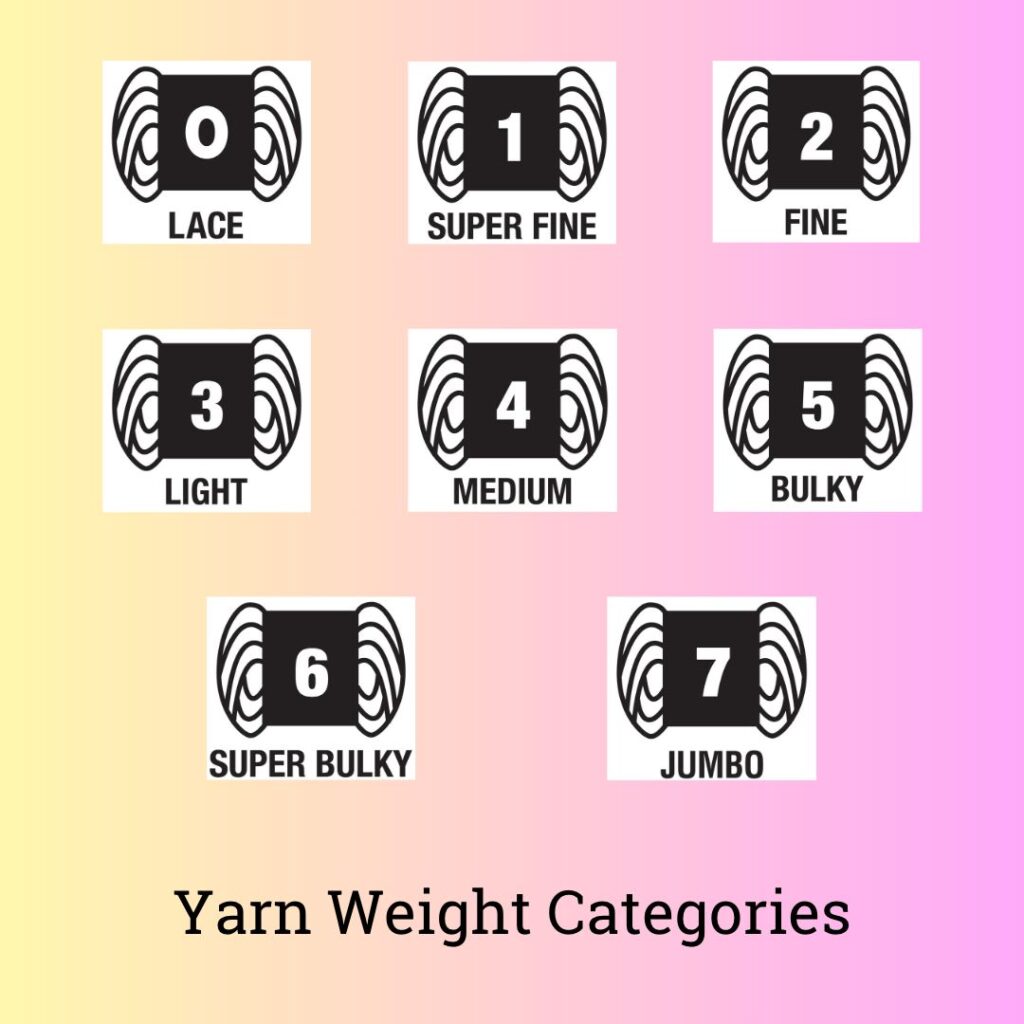
The Craft Yarn Council provides industry standards for all things crochet. This chart gives you more information about each weight of yarn – you might find it helpful.
Once you find the information about yarn weights, compare the yarn called for in the pattern to the one you’re considering as a substitute. If the yarn weight matches, you’re on the road to finding an appropriate substitute.
Fiber content and texture
Now that you understand the role the weight of the yarn plays, the next thing to consider in yarn substitution is the fiber content of both yarns.
Different fibers have different properties and these differences can have an impact, positive or negative, on the finished object. So, finding a yarn that is as close as possible to the original fiber content makes your life a lot easier and sets you up for success.
Here are some characteristics of the most common fibers used in yarn:
- Animal fibers – wool, alpaca, llama, rabbit, etc. – Animal fibers have a natural elasticity and are generally very warm. They provide an elegant drape and usually has a halo (or fuzzy look). If stitch definition is important, an animal fiber yarn might not be the best choice.
- Plant fibers – cotton, linen, bamboo, etc. – These fibers have less elasticity and give. This can be a major consideration for garments where a bit of stretch and give is desirable. They may be a bit stiffer when worked up. Plant fiber yarns provide greater stitch definition and sometimes have more surface sheen than animal fibers.
- Synthetic yarns – acrylic, polyester, nylon, etc. – Synthetic yarns are created through a chemical process. They are usually more affordable than natural fibers and offer durability, are moisture resistant and come in a wide range of colors and styles.
- Specialty yarns – eyelash, fake fur, etc. – These yarns add special effects to your finished object.
My recommendation is to try to match the fiber content of your chosen yarn substitution to the yarn called for in the pattern. You’ll come closer to matching what the designer had in mind and have a finished project that looks the way it’s supposed to.
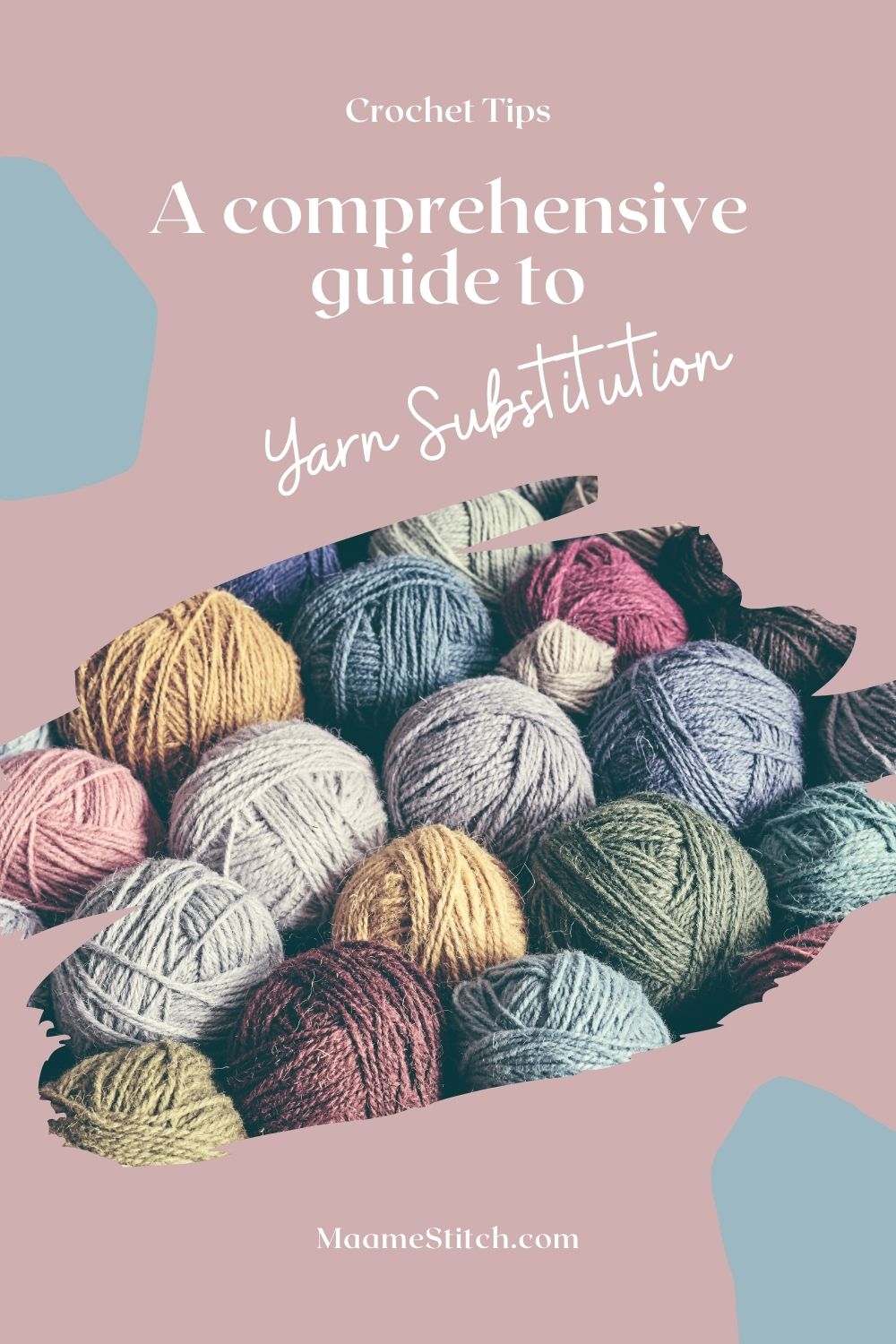
Make sure the gauge matches.
Now that you’ve compared yarn weight and fiber content for your yarn substitution, you’ll need to make a gauge swatch.
I know, the dreaded gauge. It seems none of us are really in love with determining gauge. But, for your yarn substitution to work, the gauge most assuredly has to match, especially if the item you’re making is a garment.
Why is gauge important? Because, by getting a yarn that has an almost identical gauge you can help ensure your finished object will be the size called for in the pattern. This is especially important if you’re making a garment that requires a certain fit and a specific size for the various pieces.
Ideally, you’ll want to make a gauge swatch with the yarn you want to substitute. If you need help with how to make a gauge swatch, check out my blog post.
What if the designer hasn’t included gauge in the pattern? The information you need will be on the yarn label or, at the very least, you’ll find it with the yarn description online. Almost every yarn will have a section that lists how many stitches and how many rows with what size hook you need for the ideal gauge.
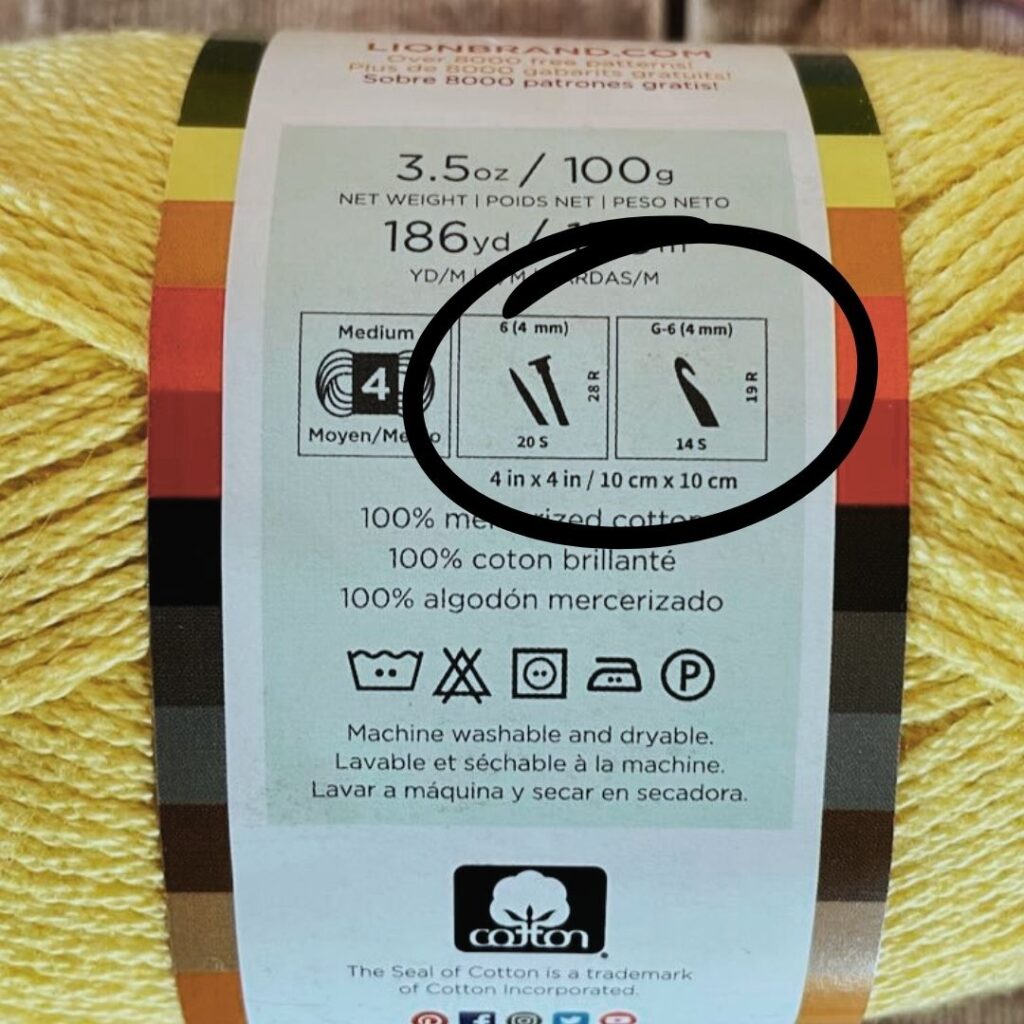
Use the hook size called for in the pattern and make a gauge swatch with the yarn you want to substitute for the original. Use the stitch the yarn company indicated for their gauge, usually a single crochet if it’s not stated. See how closely your gauge swatch matches what’s called for by the original yarn.
A couple of other factors to consider…
Look at any color work, textured stitches or other techniques that might need a specific type of yarn to achieve the finished look of your project. Are there specialty yarns like eyelash, chenille, etc. that might affect your yarn substitution decision? Does the finished object include front/back loop or post stitches that need a yarn with great stitch definition?
Think about what your project will be used for. A washcloth or dish towel will need a durable fiber with little to no stretch, something that’s easy to care for. A sweater on the other hand needs drape and stretch to fit properly. These and other considerations will limit the choices you have for substituting yarn.
How much should I buy?
Now we get down to the nitty gritty, don’t we? It’s time to figure out how much of the substitute yarn you’ll need.
You’ll need to do a little math to figure out how much you need. Here’s a handy step-by-step to help you.
First, calculate how much yarn the pattern calls for:
Number of skeins multiplied by the yardage per skein = Approx. yardage needed to make the design with the yarn listed.
If the designer tells you the approx. yardage needed in the pattern, use that amount. Be sure to add 50-100 yds to that total just in case.
Next, calculate how much of the new yarn you need:
Yardage needed for project divided by the yards per skein of the new yarn = Number of skeins needed of the new yarn (be sure to round up)
That should do it!
I hope this post has been helpful!
You’ve got a lot to think about when considering yarn substitution. While it’s not a simple matter of choosing any old yarn to substitute, you have all the tools you need right here to make an educated choice.
Don’t be afraid to experiment with different yarn weights, fibers, and textures to achieve the perfect look and feel for your project but be sure the yarn you choose gives the end result you’re looking for. Always keep in mind that yarn substitution is a creative process – use your imagination and have fun with it!
By following these tips and guidelines for yarn substitution, you’ll be able to confidently choose the perfect yarn for any crochet project and create beautiful, one-of-a-kind pieces that you’ll be proud to show off. Happy crocheting!
Still having trouble?
I’m here to help!
I’ve put together a simple worksheet that walks you through all the steps I’ve talked about here to get you to an informed decision. Fill out the form below and you’ll instantly get a link – delivered right to your inbox – for your handy Yarn Substitution Worksheet. Never guess again!

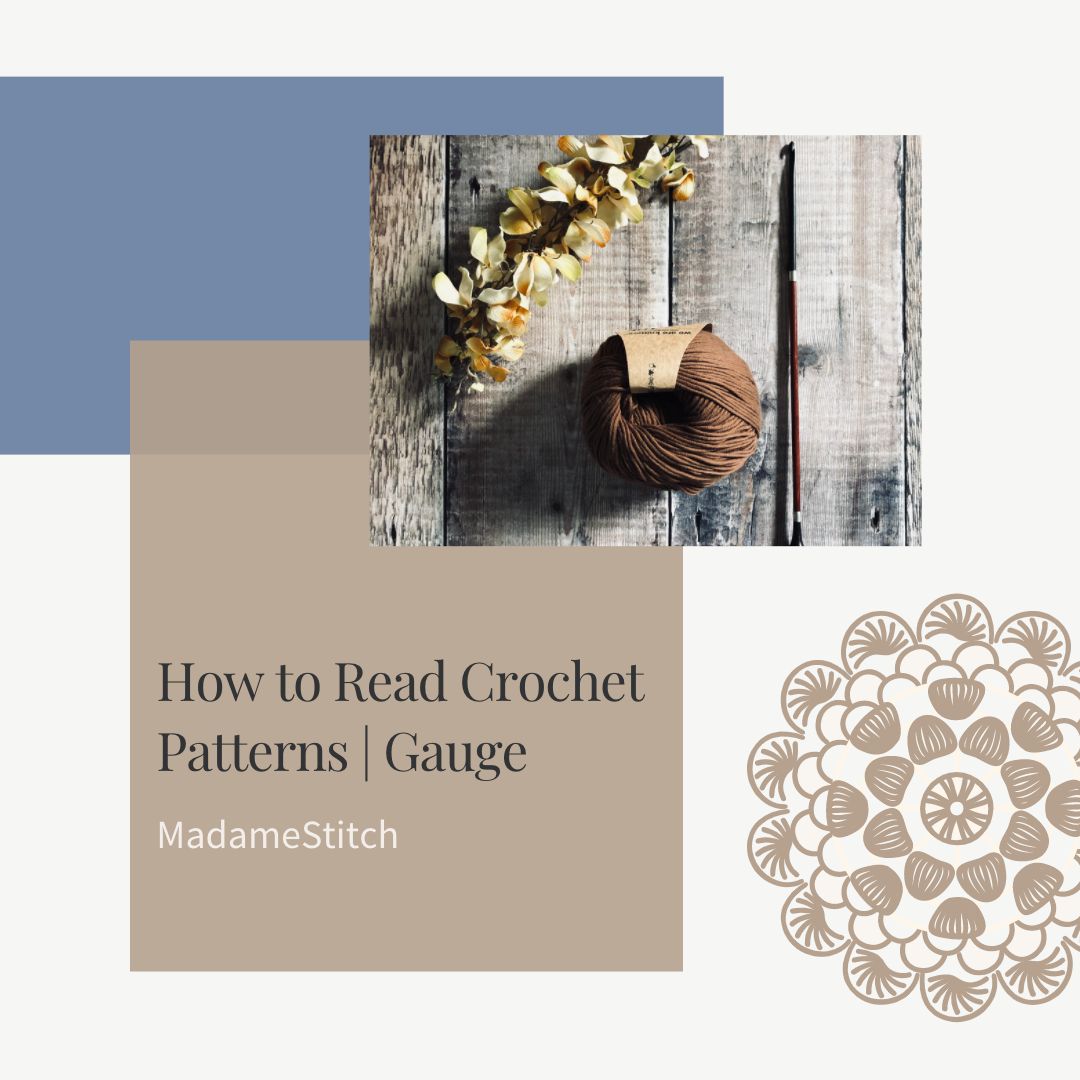
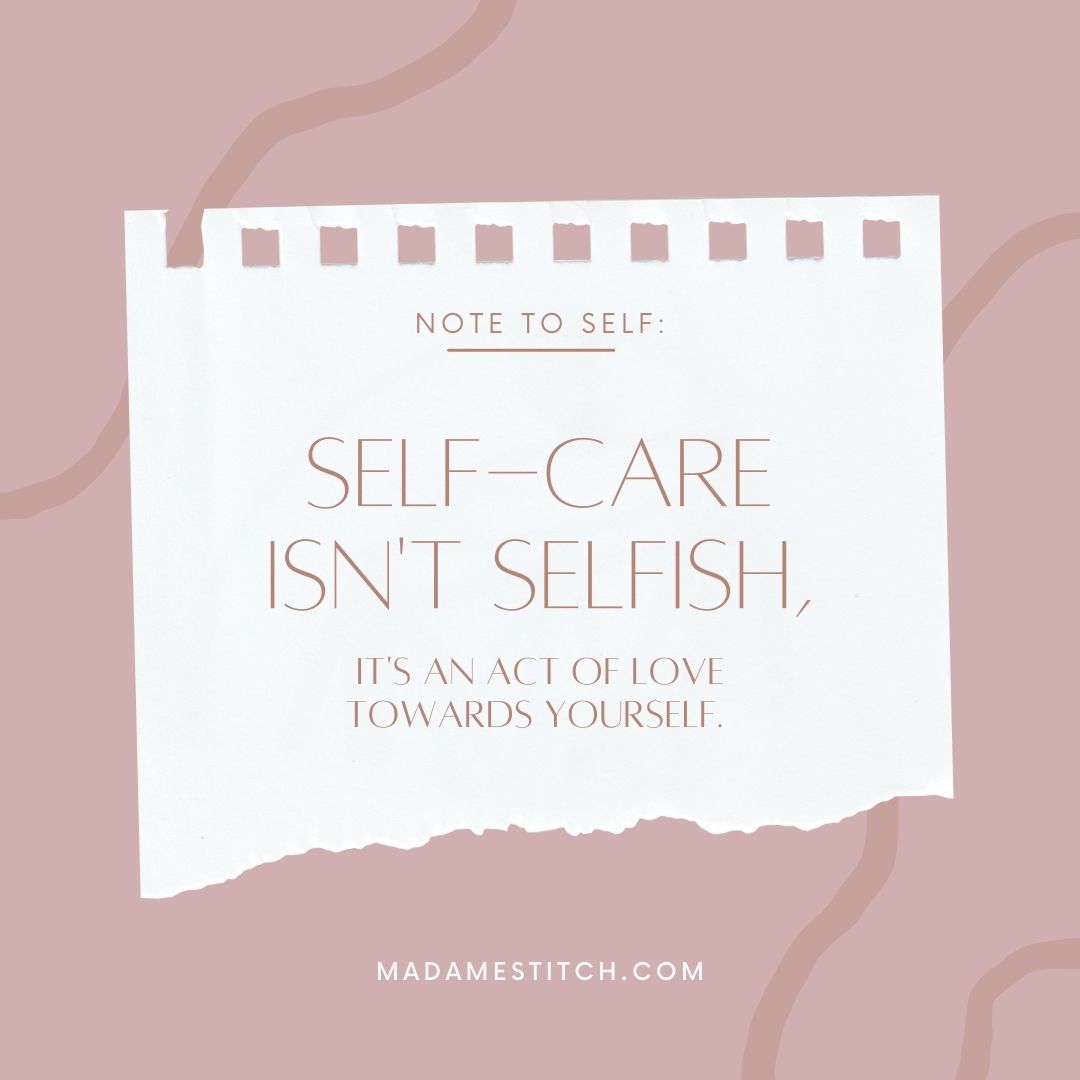
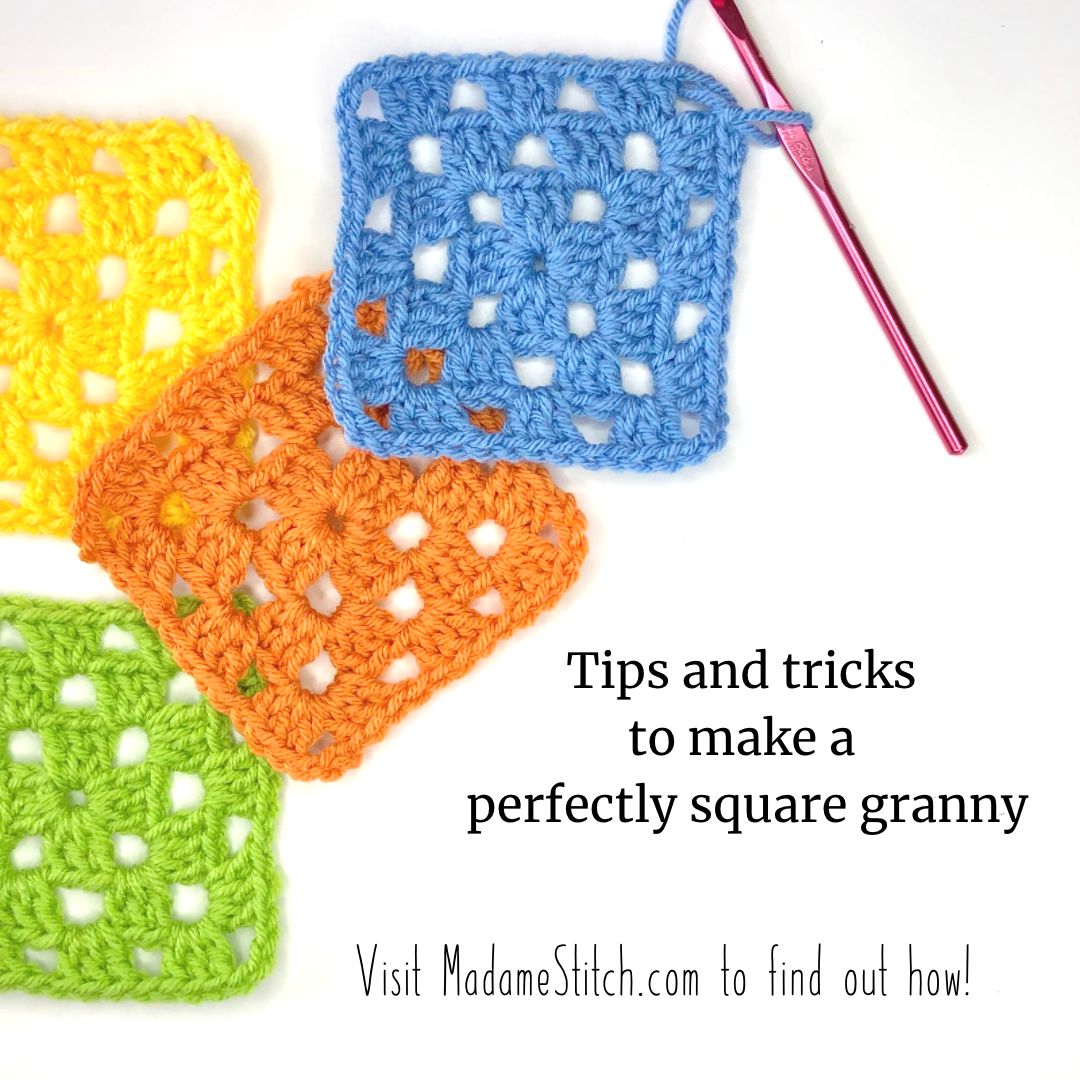
One Comment